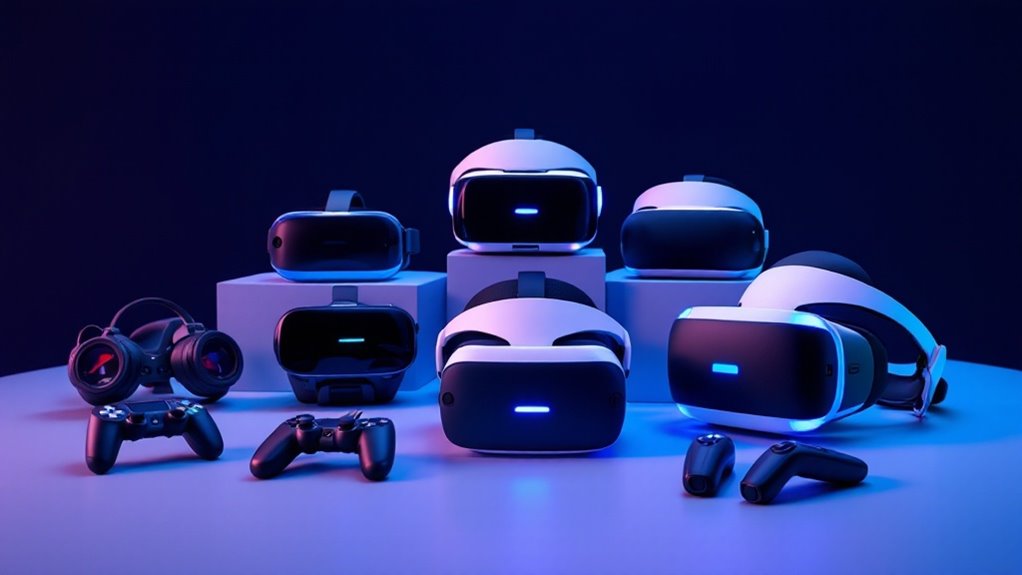Meta (of Facebook fame) pumps out the popular Quest headsets; Apple, never one to miss a trend (or a premium price tag), offers the Vision Pro. HTC keeps Vive alive for gamers and enterprise, while Sony’s PlayStation VR brings virtual portals to console folks. Pico, Varjo, HP, and even Valve (hello, finger tracking) round out the roster, each with distinct flavors—from astronaut-grade to all-in-ones. Wondering what sets these headsets—and their makers—apart? There’s more to unpack.
Let’s face it—virtual reality headsets aren’t just the stuff of sci-fi movies anymore; they’re everywhere, from your neighbor’s living room to high-stakes astronaut training.
Virtual reality headsets have jumped from sci-fi daydreams to living rooms and even astronaut boot camps—sci-fi is now just daily life.
Remember when strapping a screen to your face sounded like a bad “Black Mirror” episode? Now, it’s just another Tuesday for millions.
So, who’s behind these headsets that transport people from their couch to Mars (or at least a decent facsimile)? First up: Meta. Their Quest series—especially the Meta Quest 3—packs a Snapdragon XR3 processor, full-color passthrough, and upgraded controllers.
They’re making sure you can’t just see virtual worlds, but poke, prod, and occasionally flail at them with style.
Then there’s Apple, finally crashing the VR party with *Apple Vision Pro*. It’s loaded with spatial computing, machine learning, a 3D camera—and a $3,499 price tag to make your wallet sweat.
No big deal, just the cost of a used car for some extra pixels and “immersive” FaceTime with grandma.
HTC keeps its Vive line fresh for both gamers and businesses, while Sony’s PlayStation VR is basically the gateway drug for console fans.
*Pico*’s standalone headsets feature six degrees of freedom, which sounds fancy, but really just means you can duck, dodge, and moonwalk in VR.
For the “serious business” crowd, Varjo cranks up the resolution for astronauts and nuclear engineers.
*HP* and *Vrgineers* serve pro users with industrial-grade gear, while *Goertek* wows the Asian market with all-in-one devices packed with pancake lenses and eye-tracking.
Lenovo? They’re all about comfort and portability, because nothing ruins a VR meeting faster than a stiff neck.
Let’s not forget the backbone: Valve’s Index brings finger tracking and high refresh rates for PC diehards. Tethered headsets, like the Valve Index or HTC Vive, often connect to PCs or consoles to deliver high-end VR experiences that standalone devices can’t quite match. Testing methodology is crucial for ensuring these devices don’t cause discomfort or visual distortion during use, which is why many reviewers use extensive labs to evaluate their performance.
Google dabbles in metaverse dreams, Qualcomm powers the guts with Snapdragon, NVIDIA runs the cloud show, and Unity gives creators the tools to make VR magic.
In short? If you can imagine it, someone’s already building it—probably with more features than you’ll ever use, but hey, that’s progress.









